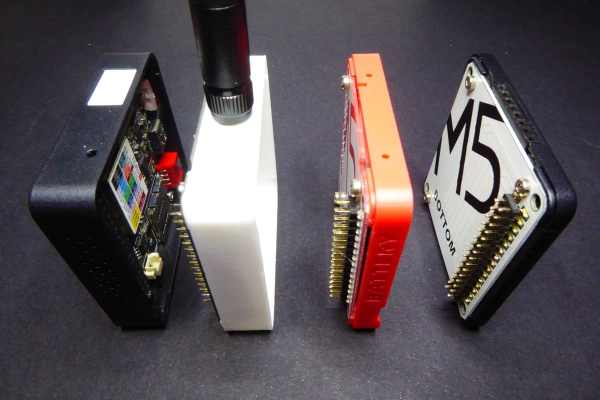LoRa is the new hotness in low-power, long-range communications. Wanting to let the packets fly, [Xose] was faced with a frequecny problem and ended up developing a Europe-friendly LoRa module for the M5Stack system. The hardware is aimed at getting onto The Things Network, a LoRa based network that provides connectivity for IoT devices. While there was an existing M5Stack module for LoRa, it only supported 433 MHz. Since [Xose] is in Europe, an 868 MHz or 915 MHz radio was needed. To solve this, a custom board was built to connect the HopeRF RFM69 series of modules to the M5Stack.
If you haven’t heard of it before, the M5Stack platform is a stackable development board platform. Like Arduino, you can add functionality by stacking PCBs using a standard header. Unlike Arduino, M5Stack fits in a case nicely and is designed for building devices with user interfaces. For $35, you get an ESP32 based system with WiFi, Bluetooth, a color LCD, battery, buttons, a speaker, and IO connectors.
With the hardware in place, [Xose] 3D printed a custom case to hold the board and added it to the stack. The firmware acts as a monitor for The Things Network, showing live coverage. The final product looks very clean for a prototype, maintaining the finished look of M5Stack.
The firmware, board design, and case design files for the project are all available on Github.












